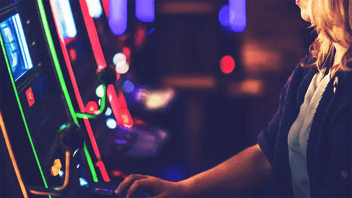Ticket redemption kiosks have historically been viewed as a vehicle for reducing expenses and customer friction associated with the cage. However, as outlined in a recent Pavilion Payments whitepaper, consumer preference for self-service is growing. As a result, the once-siloed goals of decreasing cage costs and increasing floor profitability are converging at the kiosk.
The complete evolution to kiosks-as-a-profit-center will take time and change for casinos, their vendors, and the payment industry. In the meantime, Gaming Entertainment organizations can take significant steps forward by considering these six factors during their subsequent ticket redemption kiosk evaluation:
- How will this device help maximize guest spending? On average, ticket redemption represents approximately 80 percent of kiosk transactions. Is your vendor giving you the insight to improve kiosk placement for maximum return play? Are they providing you with solutions to maximize cash access? For example, we recently advised one client to move self-service e-check to dedicated kiosks. The result was an approximately 30 percent increase in transaction volume and a 25 percent increase in transaction size. That’s the accurate dollar volume delivered to the floor.
- How can it promote my revenue-generating cage services? Cash advance and e-check solutions make up only 4 percent of kiosk transactions today. However, these transactions are typically 4-5x the size of an average ticket redemption transaction, putting more cash in circulation on the floor and providing fee revenue to the cage. Is your vendor enabling these services in a way that limits consumer friction? Are they using signage and screen prompts to steer guests to products that maximize cash and fees?
- How can it help maximize spending across the property? Putting more cash in your guests’ pockets is nice, but how can you ensure it gets spent with you? Kiosk transactions provide you with a captive audience where, unlike the cage, communicating and delivering offers and information is accessible. They can play an invaluable role in steering guests to other parts of your experience. Do your kiosks enable the ability to run video during idle time and signage to engage consumers as they walk up to the device? Do they offer the flexibility to complement your brand experience through video, signage, and other forms of customization?
- Is it minimizing space? A gaming kiosk the size of a Buick is a function of poor design. Cash capacity and efficiency are not mutually exclusive. Every square inch of a casino either costs money or produces it. Maximizing room for revenue-generating slots and table games should be every GM and slot floor manager’s priority.
- How can it keep my guests and my business safe? Ticket redemption kiosks have solved many problems for casinos. They also created a big one: security. Vendors not experienced in this area have been putting devices on casino floors that spew guest data in the clear, aren’t close to being EMV-ready, are susceptible to skimming, and can easily be duped by employees to steal funds during replenishment. Does your vendor operate around a culture of security? Are they using multiple layers such as EMV, encryption, and tokenization to protect your guests’ data? Does their kiosk design maximize consumer privacy? Reputational damage due to fraud will crush your future profit aspirations.
- How can I be confident the device will be running when I need it most? Unlike gym equipment, you don’t see revenue-producing slots out of service on a casino floor. Why would you tolerate the same for your cash-access devices? Everything breaks at some point. How fast your vender gets you back in the game counts. Does your kiosk provider offer around-the-clock service? Can they proactively monitor your device to predict breakage and order parts? Can they provide the parts and adequate training to enable casino staff to fix common issues?
For many, kiosks will ultimately become a profit center – and a cornerstone of the guest engagement experience – in only a few years. However, these devices typically have a 5-7 year shelf life, meaning your decision today will help or hinder your future plans. Please get in touch with us to learn more.




